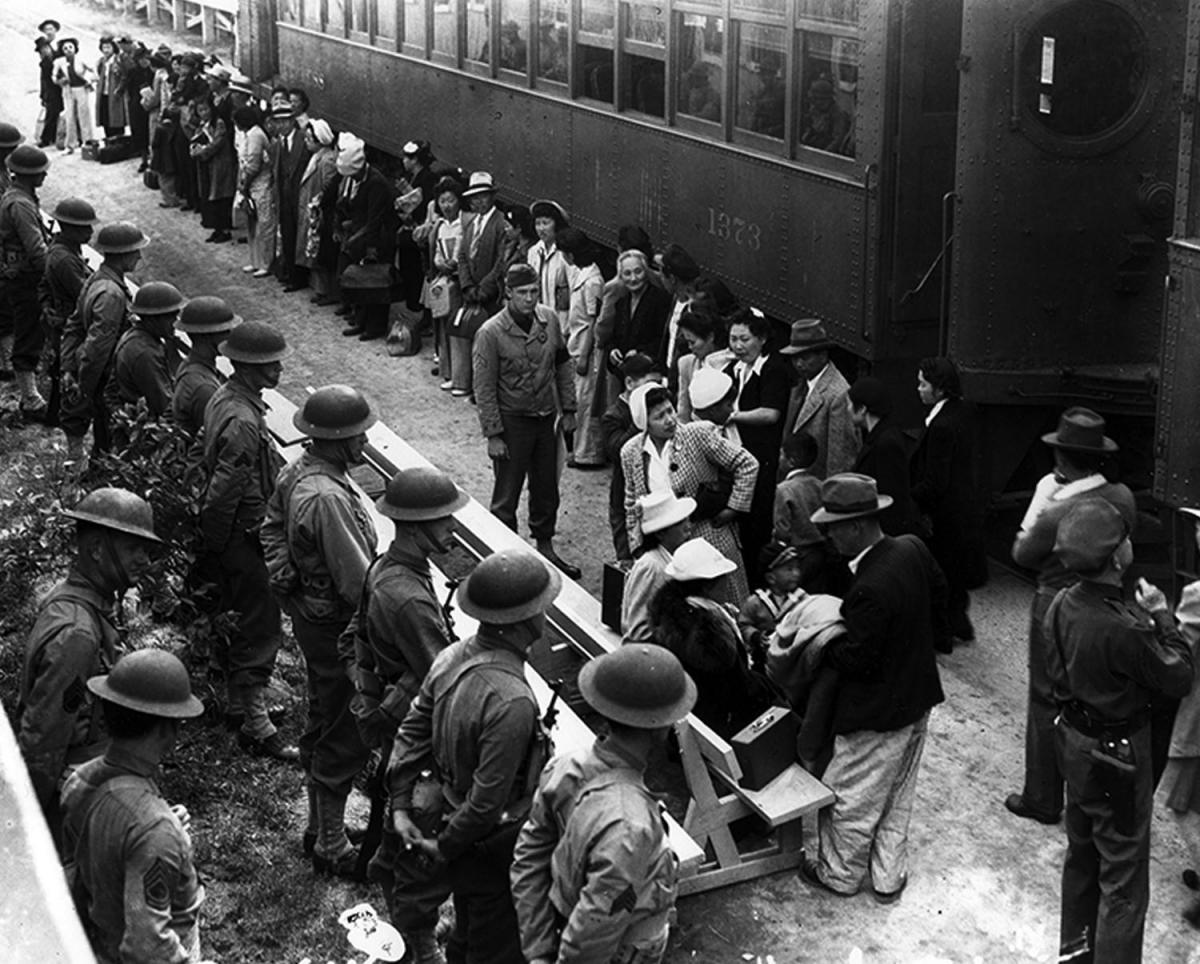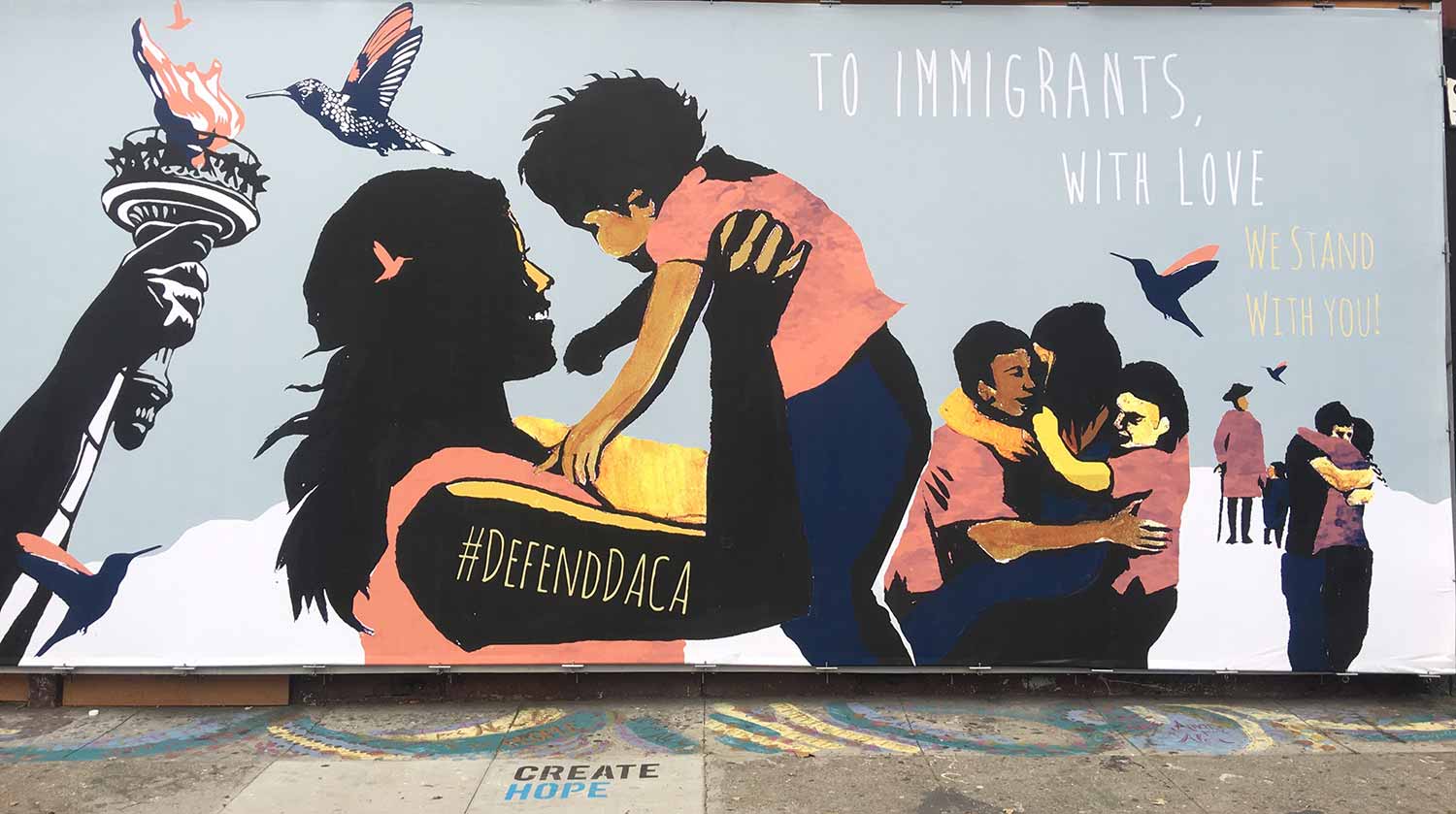What We Can Learn from Resistance to Japanese Internment

The daily reveal of anti-immigrant actions by the U.S. government is spectacularly shocking. Somehow each new human rights violation, new constitutional infringement, new mistreatment, new indignity, new imaginative cruelty towards immigrants (documented and undocumented) manages to be more shocking than the last. It is incredibly sad, infuriating, and terrifying.
Even though we all knew it was coming, this has been so much worse than anticipated. Valid visas are being suddenly terminated (TPS, student visas, all South Sudanese). Asylum is being curtailed, as if U.S. refusal to recognize asylum claims makes the dire circumstances of people seeking asylum untrue. Legal options for immigration are being narrowed. Temporary visitors with visas are being detained. ICE agents are acting like carjackers, breaking windows and violently dragging people out of their cars and arresting them. 1 Shockingly, immigrants in detention were sent to Guatanamo (and abruptly removed in late February), at a huge financial cost and likely not a winner for humane treatment of detainees. I didn’t think anything could top that until the U.S. illegally sent 238 men to an El Salvador forced labor prison. These men were given no due process and in many cases, clearly did not merit detainment of any sort. Families are being broken up as long time undocumented residents are hauled off. 2 Trump promised mass deportations, but as ICE struggles to deliver them, they are grabbing the easiest targets–law abiding community members. And of course, there is the revocation of green cards, which only the Secretary of State has authority to do. The U.S. government has openly admitted that these are being revoked for pro-Palestinian speech, something many of us understand to be First Amendment protected activity.
1 One man (who was here legally) was dragged out his car next to his wife in her 8 month of pregnancy in this viral event.
2 In a shocking case, an entire family was deported because the parents are undocumented. The family’s five children are U.S. citizens, and one of them, a 10 year old, is currently receiving treatment for brain cancer.

I have been wondering what can I do to alleviate this situation, if anything. What can any of us do in the face of such overwhelming power, violence and disregard for the law? When the forces pushing for mass deportation and mass dehumanization of 12 million undocumented people3 feel so powerful and ubiquitous?
3 There is some incredibly inaccurate information widely shared on how many undocumented immigrants are in the United Stated. A caller to Russ Fulcher’s town hall April 9 indicated that he believes that there are 50 million “illegals” living in this country (of which, 20 million arrived during Biden’s term, according to the caller). Reliable estimates indicate that 11 to 15 million undocumented people live here, the majority having been here for 15 years or longer.
There are many resources and blueprints for action, but so many depend on contacting our congressional representatives or senators, urging them to take action. I can and I will, but I have also long since learned that in the deep red state of Idaho with its entrenched incumbents (for example, Mike Crapo has held his Senatorial seat since 1999), they will implement the standard Republican agenda and are unlikely to challenge Trump. Even my state representatives are rather recalcitrant, despite representing a legitimate swing district. No email, no call, no in-person capitol visit will convince them to do anything other than implement the agenda of the Idaho Republican Party, which has a strong anti-immigrant platform. We should keep writing our legislators because it is their job to listen to us and serve us, but that is not going to be enough. In the same vein, we cannot rely on the court system to save us, although I have not entirely given up on that institution.
Some of the most egregiously illegal anti-immigrant actions (the removal to El Salvador, the revocation of green cards) is being justified under the Alien Enemies Act of 1798, one of four bills that “tightened restrictions on foreign-born Americans and limited speech critical of the government” (National Archives). The last time this law was used was to justify the internment of Japanese immigrants and citizens of Japanese descent living on the West coast, a shameful action disavowed by the U.S. Supreme Court in 2018. The U.S. formally apologized for internment in 1988 and provided reparations to its victims.
Background on Internment
In brief, Internment was the forced confinement of thousands of American citizens and residents of Japanese descent from 1942 to 1945. 4 After the bombing of Pearl Harbor in Hawaii, Japanese-Americans from the West Coast were forced to give up their homes, land and possessions, settle their affairs, and move with 6 days notice to inland locations chosen for their remoteness and distance from militarily strategic locations.
4 This occurred in the U.S.and Canada, but I am only focusing on the U.S. story.
5 In addition to the central lesson that denying people their constitutional rights and imprisoning without charges are bad ideas
I’ve been wondering lately what lessons we can draw from Japanese Internment. 5. How did Internment happen? And most saliently, what did people do to resist it or help those interned?
It is clear there was a large amount of public support for Japanese internment in the aftermath of the Pearl Harbor attack. The Wikipedia entry on this details a number of editorials in prominent newspapers questioning the loyalty of Japanese-Americans and supporting their incarceration in the name of national security. 6
6 For those who recall the propaganda campaign leading up the 2003 Iraq invasion, this may feel familiar.
7 Eisenhower, M.S. (1974). The President Is Calling, Doubleday Press
The memoir of Milton Eisenhower, the director of the War Relocation Authority (WRA) for its first 90 days, has been particularly instructive.7 According to Mr. Eisenhower, a man who ultimately opposed internment but was in charge if implementing it, there were many forces at work leading to internment. It was not the result of a single person, although some individuals share the blame more than others. In his words:
The evacuation of Japanese-Americans from their homes on the coast to hastily constructed assembly centers and then to inland relocation centers was an inhumane mistake. Thousands of American citizens of Japanese ancestry were stripped of their rights and freedom and treated almost like prisoners of war. Many lost their homes, their businesses, their savings. For 120,000 Japanese the evacuation was a bad dream. How could such a tragedy have occurred in a democractic society that prides itself on individuals rights and freedoms? How could responsible leaders make such a fateful decision? I have brooded about this whole episode on and off for the past three decades, for it is illustrative of how an entire society can somehow plunge off course.
Misunderstandings, rumor, fear, misinformation, prejudice, and ignorance were dark winds that blew across the land. An incident here, a rumor there, a political move, a military decision, an official memorandum–all fell like pieces into a mosaic that no single individual could perceive or had created. And as the days passed and the pressure mounted, the ultimate decision began to take shape.
I believe to this day that most of the evacuation could have been avoided had not false and flaming statements been dinned into the people of the West Coast by irresponsible commentators and politicians. There was surely some underlying and latent dislike for Japanese in that part of the country and that provided fuel for ignorance, intolerance, and bigotry to spread like fire.
Mr. Eisenhower himself indicated not supporting Internment from the outset, but he nevertheless accepted the position of the first head of the WRA. During his tenure, he did advocate that families be kept together, that college students be able to finish their studies and that Japanese interned workers be paid the prevailing wage for their work. Reading his memoir, I was struck by was the compassion of Mr. Eisenhower, who appeared deeply interested in the comfort and dignity of those he was relocating and imprisoning. That is not to whitewash the grave injustice of Internment, but it does stand in stark contrast to the current governmental leadership, which seems hell-bent on outdoing each other in ostentatious shows of gratuitous cruelty towards immigrants.
The historical reader Documents of Japanese American Interment8 recounts acts of solidarity and support by citizens for the internees:
8 Linda L. Ivey and Kevin W. Kaatz, 2021, ABC-CLIO (Santa Barbara, CA). They cite Voices Raised in Protest by Stephanie Bangarth (2008, UBC Press) as a source for much of their material.
A banker who communicated with Japanese internees by mail, collecting rent on their behalf and otherwise keeping their financial affairs in order.
A local newspaper in Bainbridge Island, Washington that repeatedly (and publicly) advocated for its Japanese community members that were forcibly removed, bringing up the absurdity of after waiting 3 months after Pearl Harbor, the U.S. Government gave western Japanese residents 6-days notice to gather their things, put their affairs in order and prepare for forced relocation.
The Quaker leader, Clarence Pickett, who personally visited colleges to ensure they would take in Japanese college students from the West coast whose studies would be interrupted by forced relocation.
Religious and community leaders including the then-president of Stanford University advocating for other alternatives to internment. That effort failed, but, given how rare a pro-Japanese view was at the time, their efforts are commendable.
There are other examples that seem less humanitarian: the agricultural companies advocating for internees to work at their facilities due to economic need (there was a dearth of workers due to the wartime draft). The state governors, who at first were apoplectic at the thought of ‘dangerous Japanese people’ being relocated to their state, then later inviting them back for the economic benefit of additional workers in the midst of a labor shortage.
What We Can Do
If you’re wondering if the things described before–rushed deportations with no due process, arrest of law abiding immigrants, sudden revocation of valid visas–are happening in your community, they probably are. The U.S. mass deportation machine is active all over the United States because there are immigrants, both documented and undocumented, all over the U.S.
In Idaho, several students have had their visas unexpectedly terminated by the Department of Homeland Security. ICE did recently conduct a raid at an Idaho dairy farm of one Idaho legislator when another legislator reported her operation in retaliation for her not supporting some particular provisions of an anti-immigrant bill. And the Kootenai County sheriff’s office in Northern Idaho is helping Eastern Washington police circumvent Washington State’s sanctuary laws. If immigrants are being hounded and hunted in the deeply red and ultra-white 9 parts of Northern Idaho, they are being hunted everywhere.
9 94% of Kootenai county identifies as white (2020 Census), and 75% of the electorate voted for Trump in 2024 (Idaho Secretary of State).
The Nation recently published a guide to the Trump mass deportation machine, which is both helpful and intimidating. The main players are ICE and the Department of Justice. How on earth do we counter such powerful institutions?
It is clear from reading about Japanese Internment that one of the first things we should do is openly, publicly declare our support for immigrants of all statuses. Do not allow anti-immigrant hate, that has become so commonplace in today’s discourse to flourish unchallenged. Immigrants have been U.S.’s favorite scapegoat for decades and it is time to change that. How do we do this? Write your legislators at the state and federal levels and tell them immigrants matter. Write a letter to the editor to your local paper. Make a pro-immigrant sign for your next protest.10 If you feel safe doing so, challenge anti-immigrant sentiment when you hear it. Take the solidarity pledge. Whenever you can, advocate for immigrants.
10 This blog has several pro-immigrants signs available for free download here

Second, do not get caught in the trap of “good immigrants” (lawful, documented) versus “bad immigrants” (undocumented). It’s clear that the Trump mass deportation machine means to declare everyone caught in their net a “bad immigrant”, however much the definition must be stretched to accommodate all undesirables. The very use of the term “illegal” (immigrant, alien) is dehumanizing and justifies designating undocumented migrants as “bad immigrants”. Let’s reject that framing.
Third, support immigrants in your community. This can be as simple as supporting community food pantries or community health clinics. Talk with immigrants you have personal connections with about formulating a plan if arrested. Are there possessions to take care of? Apartments to watch? Dependents that need care? Of course you do not have to commit to absorbing these massive responsibilities yourself, but talking with others about what they would do if suddenly they were whisked away from their community can help if they are faced with arrest.
Fourth, attend a know your rights training and encourage others to do so. The ACLU offers two each month. This is important for immigrants and citizens. Know how to protect yourself and your community. Business owners: understand your 4th amendment rights during an ICE raid (if you are unfortunate enough to experience one). Know what warrant ICE agents must possess to inspect your business, and where they are allowed to go. Immigration-related rights are complicated and context-dependent. Know how to defend yourself and your community. Do not trust ICE agents to properly counsel you on your rights.
These are particularly alarming times. At times, I feel deep sadness, anger, fear or just plain exhaustion. I take heart and courage from many things. The injustice and inhumanity of family detention and family separation. The knowledge that asylum was established after what happened to European Jews during WWII. A recognition that we cannot continue to blame and scapegoat immigrants for every last problem in the U.S., no matter how politically convenient it may be. And I’m inspired by the voices from the past to not make the same mistakes they did.
